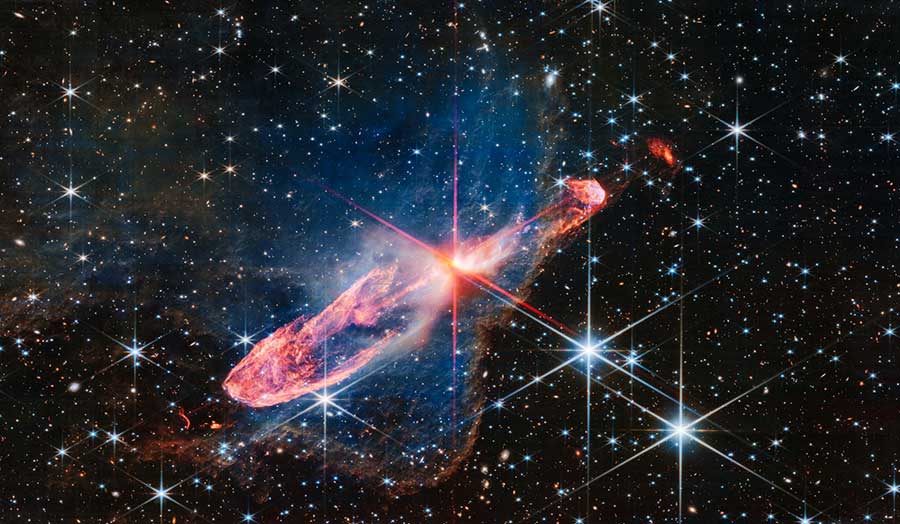From - Sky & Telescope,
By - Monica Young,
Edited by - Amal Uddawatta,

NASA / ESA / CSA; Image processing: Joseph DePasquale (STScI), Anton M. Koekemoer (STScI)
Images capture the birth of stars and planets in multiple results from the James Webb Space Telescope, the Hubble Space Telescope, and the Very Large Telescope.
Some 1,400 light-years away in the southern constellation of Vela is a dark nebula dense with dust that blocks out background stars. With the James Webb Space Telescope (JWST), astronomers can see through and into this cloud (seen above in ethereal blue), revealing a pair of still-forming stars known as Herbig Haro 46/47. Discovered in 1977, Herbig-Haro 46/47 has served as one of the prototypes of this unique celestial phenomenon ever since.
The stars themselves are not visible, though the orange diffraction spikes point to their central location. A dense disk of dust and gas hides their fires. The disk isn't visible either, but its shadow is cast as two dark cones above and below the stars, seen between the spikes. While huge masses of dusty gas feed the still-growing stars, it's the paltry plasma speeding away from the center that dominates the image. The jets provide an outlet for the angular momentum of the inward-spiraling gas in the disk, so they are key both to maintaining the stars' growth and, for astronomers, to understanding it.
Comments
Post a Comment